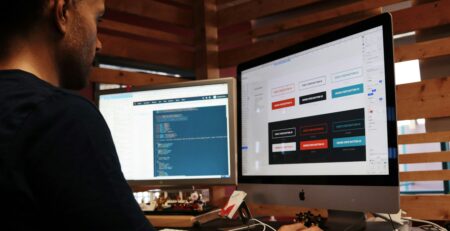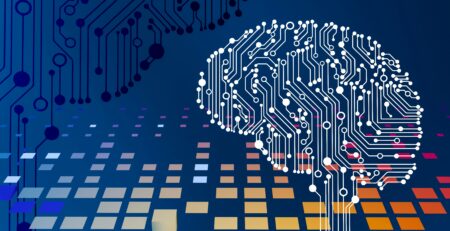Successfully Managing Software Development Teams
For the most part, there’s no fixed format for a software development team. There are three general structures for these teams that have certain advantages depending on the goal of the project. Considerations like project complexity and the budget should also be factored in when determining how a software developing team is managed.
Software is being used in more ways and more industries than ever before. As a result, more non-tech workers are running into the problem of software project management and would greatly benefit from understanding how a typical project works.
Read on to find out everything you need to know about managing software development teams for the most efficient and successful execution possible.
What is Software Development?
Software is information that instructs computers and other hardware. Most creatives will probably work on application software more often than any of the other types, but programmers and developers frequently work on a few other kinds.
System software helps a device perform core functions that are central to its purpose. The operating system on a computer is a great example of system software, as are game engines and automation programs for robots and artificial intelligence.
Programming software gives programmers the tools they need to write and organize code. There are many more choices for programming software than most people are aware of. Programming languages like Java, Python, BASIC, and C++ have to be translated into machine language to be useful. Programming software such as Eclipse, Coda, Sublime Text, and Notepad++ do this job.
Getting into the nitty-gritty details of programming software is far too complex for the scope of this guide, but suffice it to say that unless you’re a programmer yourself, you won’t need to know about it in great detail.
Application software is what powers all the apps we use. Social media, eCommerce, gaming, education, and everything else you can download from the app store need application software to run. Businesses are trying to get their brands right in front of prospective customers and in our smart phone-obsessed society apps are the best way to do that.
The newest category is embedded software, which is firmware or a microchip that controls a device’s functions kind of like system software does for a computer. Embedded software is for objects that previously weren’t connected. The Internet of Things now supports internet connectivity for objects from light bulbs and refrigerators to smart cars and even rockets.

Software development is responsible for structuring and putting these various kinds of programs together. Engineers, developers, and coders work together to build out software, although many other supporting roles don’t work directly with code.
Roles On A Software Development Team
Classically organized software dev teams organize people in the following roles:
- Project Manager
The link between the company and the team is the project manager. Looking after things like the budget, scheduling, and specifications from higher-ups and the client, project managers play a critical role in the business side of things even if they aren’t intimately familiar with the technical aspects of the final product.
- Team Lead
A similar role within the working developers is a role called the team lead. They serve as a communication intermediary between the client and the other developers and also resolve problems and disputes. When you have a partially or fully remote software development team, assigning a team lead is the fastest way to ensure communication is open, regular, and intentional.
- Tech Lead
Problems with the technical tools used by the software development team are solved by the tech lead. They should ideally be the most experienced developer on the team. Hardware issues and problems with other issues that aren’t necessarily directly involved with the software development process are the most typical issues that tech leads need to address.
- Front-End Developer
Anything programmed that will wind up directly facing the end user is coded by the front-end developer. Think of this position as the person who implements the designs constructed by UX and UI designers. Beyond the coding, they also communicate with the client.
- Back-End Developer
Coding for all the supporting structures necessary for the UI and proper function of the various aspects of the final product is written by a back-end developer. But they aren’t solely responsible for writing the code. Back-end developers also organize the way information is processed and how servers work to store information so that it can be readily accessed.
In many ways, back-end developers’ roles are very similar to those of an information architect. The two roles could well be performed by the same person on a small project, or there could be significant overlap between the back-end developer and the information architect on a larger project.
Regardless, the back-end developer is responsible for writing all the ones and zeros that allow for a database of information and the networks across which that information is accessed by all the users of the final product.
- QA Engineer
Quality assurance makes sure progress on a given project doesn’t prevent the product from working properly. QA engineers also work to ensure that the final product meets national and international standards. Running tests to find errors and making sure those errors don’t happen again are central responsibilities of this role.
To protect the budget, QA engineers typically automate testing and reduce the need for one or several dedicated testers to run through the code. The testers and QA engineers are not the same as the people who might test out the product or elements of its design. They test it looking for bugs and mistakes, frequently testing aspects of the product that aren’t going to be visible to the end user.
A QA team might have multiple roles within it depending on the size of the teams and the budget. These roles, which include testers, managers, designers, and analysts, are commonly combined into one or two roles on smaller teams.
- UX/UI Designer
While the people crafting a perfect user experience for the people who buy the software will probably have some awareness of coding and programming, they aren’t going to be experts. They’ll focus on user research, identifying pain points that the customer needs to solve and build a great journey through the software that will delight the user and make them keep using the product.
UI, or user interface design, concentrates on the visual elements of a page, app, or software. It’s part graphic design and part user-based structuring. They’ll deliver mockups and other prototypes to the front-end developers who convert them to usable code.
UX designers craft the User Experience (UX) which includes more than just the visual elements. It is also the way information is accessed and how the software can make the user’s life easier. That may seem a bit nebulous, but it’s a critical role that could be responsible for the vast majority of the user-facing elements of the software.
What is the Software Development Life Cycle?
The software development life cycle is the process of constructing a software product within the larger business process. Much like design thinking, work within the software development life cycle is iterative. Although there are seven stages defined by the work done within each one, members of the software development team frequently go through the stages out of order and jump around to different nonsequential stages.
The SDLC is more or less a structure specifically meant for use in software project management. Here are the six stages of the software development life cycle:
1. Planning
In this earliest stage, you need to find out if the project is feasible or not. Is the problem large enough to merit new software? Is there already a tool for accomplishing what the new software would do?
Setting a schedule and goals occurs during the planning stages. Of course, these can be adjusted later on in the cycle, but there should be some kind of established road map. You’ll need it to get the money you need to keep the project alive.
2. Analysis
Once you have everything planned out, the team has to delve deeper into the particulars of the new product. Potential specifications and comprehensive outlines of existing prototypes and products are put to use here. System requirements that allow the software to do what was laid out in the planning stages need to be determined as well.
In some companies, the team may be working on its project at the same time as other teams are working on separate ones. Identifying system requirements and the technical requirements for the back end of the product will ensure that your team isn’t using too many resources or attempting to do what other teams are already doing elsewhere.
Some user research should occur at this stage as well. Finding out what problems they have and how the new software will address those problems is the best way to build an effective piece of software that people want to use.
Something called a Software Requirements Specification (SRS) document is produced in the analysis stage. It contains everything about the project from its scope and description to its requirements for security, safety, and performance. All of the interfaces will also be included.
3. Design
Front and back-end systems need to be built in the design stage. UX/UI designers will work on the visual elements and the structure of the user journey while programmers will build out the necessary databases and system requirements.
The SRS document is transformed into an actual structure during the design stage. The result, which contains plans for the operation, training, and maintenance of the software, is called a Design document. It will come in handy as a reference guide for the rest of the stages of the software development life cycle.
4. Development
Developers and programmers finally start building the software in the development stage. White-box testing, which looks at the code of the software and aims to root out vulnerabilities, is part of this stage as well. Static application security testing (SAST) tools are used for white-box testing.
The organization should have some kind of programming directives to make sure that the product that results from this development stage meets all branding conditions and the goals of the larger company as well as the individual goals set out in the planning stages.
Choosing the right programming language is part of the developers’ responsibilities during this stage. Ideally, everything done in the first three stages – including identifying problems and planning for their solutions – should streamline the development stage.
5. Testing
Developers and the QA team continue running through the product code to make sure there are no problems that will impact how the final user experiences the software. They have to identify bugs, note them, and repair them. If you have a very complex product on your hands, this could take some time.
In some cases, problems identified in the testing phase merit a return to the development stage. This should only happen if the bug reveals a structural issue that can’t be patched over. Programmers could also discover an opportunity to greatly improve the product during testing.
6. Implementation
Once all of the various pieces of the software have been combined into the primary source code, you have a finished product that’s ready for introduction into the public market. Implementation is a bit of a breather for the software development team, but their job isn’t over yet.
7. Maintenance
Users should be able to report issues with the product. If they do, programmers need to be available to fix bugs and improve the software. The company and development team may also decide they can make improvements to the software without user feedback. Updates in the market or in the way people are using the particular kind of software could necessitate upgrades and overhauls, which means you could be starting the whole cycle over again eventually.
Tips for Successfully Managing Software Development Teams
In many ways, software project management is the same as managing any other type of product. But as you can see from our description of the software development life cycle and the possibility of lots of team members, software project management has its nuances.
For one thing, you have to be able to communicate with people that have deep technical knowledge about their craft, even if you’re not that knowledgeable about code or technology. Our recommendation is to concentrate on the UX/UI elements that are readily understandable and give the programmers room to explain their technical knowledge.
If you’re working with remote programmers or other remote employees, schedule regular weekly meetings where people can explain what they’ve been working on most recently and locate that effort within the SDLC and the project plan as a whole.
The budget and schedule are likely to be a huge concern in software project management so make sure there is a highly visible metric for staying on course and on budget.
Perhaps the most important thing project managers need to do for software development is choose the right model. The SDLC can be linear if it has what’s called the waterfall model structure or it can be iterative, closer to typical design thinking approaches.
You could decide to use a circuit model where certain aspects of the project are run through almost the whole SDLC before being integrated in the final product. You could try a no-planning approach if the client isn’t sure what they want or you could try the well-known agile SDLC model which has more frequent small iterations that allow for more testing and dynamic problem-solving.
It depends on what the goal is and what resources you have to work with. Your team members may have a preference for one approach over another or have skills that lend themselves to one of the models in particular.

Conclusion:
Managing software development teams is often complicated by gaps in technical knowledge between the project manager and the team members. But thanks to the variety of approaches available in the SDLC, software project management can be streamlined even if the head of the team isn’t a programming expert.
The most important thing you need to do to successfully manage a software development team is understand how the process works at its most fundamental and how you can outfit it with different members and cycle structures to get different results.
After reading this guide, you should have the ideal foundation for managing a software development team effectively. Keep the team morale high and you’ll be churning out great software in no time.












